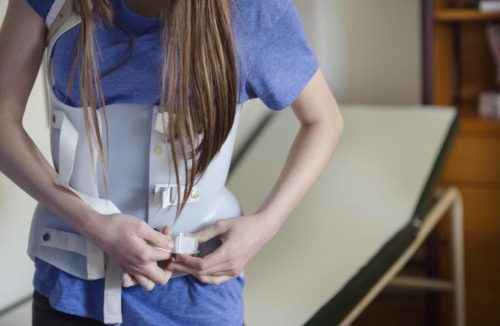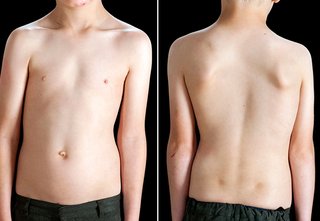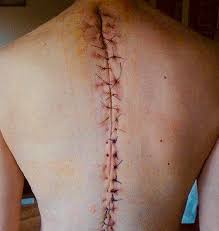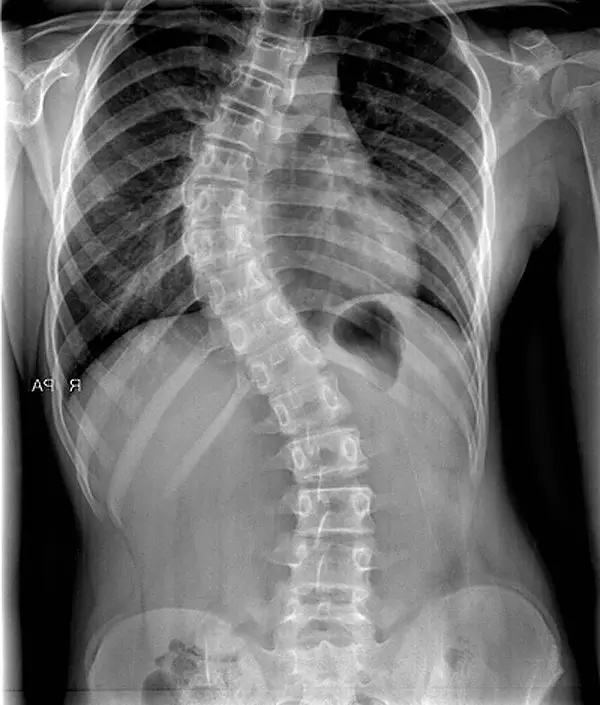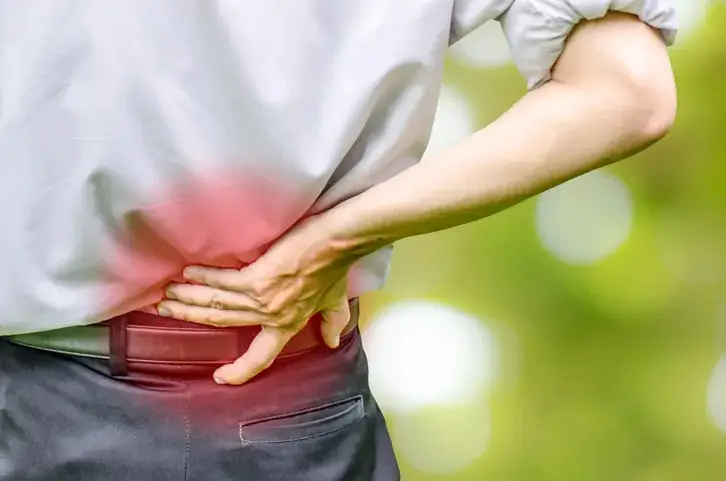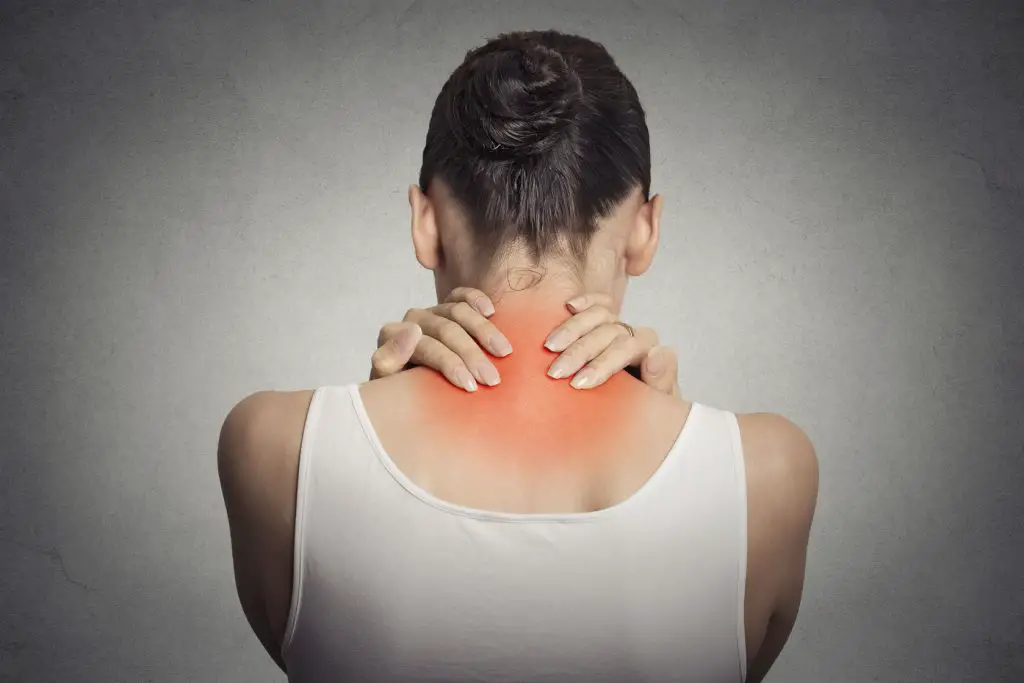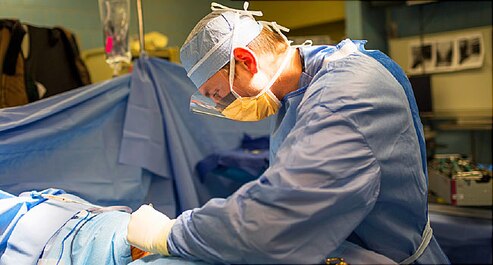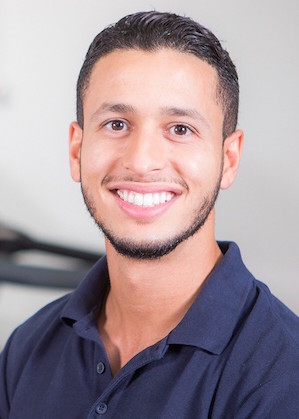Article reviewed and approved by Dr. Ibtissama Boukas, physician specializing in family medicine
A scoliosis brace is a medical device used in children and adolescents with scoliosis. Its main objective is to slow down the worsening of spinal deformity.
This article explains everything you need to know about the scoliosis brace, mainly in children (definition, types, daily use, risks and alternatives).
Note: Before discussing braces for scoliosis, it is essential to be familiar with the diagnosis of scoliosis (definition, symptoms, types of treatment, etc.). To know everything about this condition, I strongly advise you to consult the following article:
Scoliosis in Children from AZ: Diagnosis and Management
Scoliosis corset, what is it?
Scoliosis is a condition causing spinal deviation which causes an abnormal curvature of the spine.
As it is sometimes progressive (especially in children), it is possible that the doctor prescribes a corset for scoliosis. This device fitted with straps and worn around the torso serves to prevent further spinal deformity. It also serves to reduce the chances of having to undergo surgery. Unfortunately, the corset cannot completely or permanently straighten the spine.
There’s plenty of rigid braces maintain the spine as straight as possible, and prevent it from deforming further. The dynamic orthoses, on the other hand, allow more movement while encouraging the body to maintain a straight posture. However, they are less effective than rigid corsets.
Indication
Currently, bracing is the only treatment that can potentially slow down the progress of scoliosis in a child or a teenager whose bones are still growing. Indeed, its use is not really effective after growth, when the deformation is fixed.
In general, the device will only beno use if the deformation of the column is too great (usually more than 40 degrees, measured via Cobb's angle). Also, a brace will often not be necessary if the spinal deformity is too small (less than 20 degrees).
Scoliosis in Children from AZ: Diagnosis and Management
Article reviewed and approved by Dr. Ibtissama Boukas, doctor specializing in family medicine For…
Scoliosis Surgery: Types and Results (Recovery)
Article reviewed and approved by Dr. Ibtissama Boukas, doctor specializing in family medicine The…
Adult scoliosis: How to cure without surgery?
Article reviewed and approved by Dr. Ibtissama Boukas, doctor specializing in family medicine The…
Lumbar scoliosis: Definition and management (what to do?)
Lumbar scoliosis is the most common scoliosis in adults. This is a deviation…
Cervical Scoliosis: Definition and Management
Little known, cervical scoliosis is a three-dimensional deformity of the spine located at…
Scoliosis: neurological complications (possible causes)
Scoliosis is a permanent deviation of the spine. The etiology is most…
Types of Scoliosis Braces
Some corsets are worn from the neck to the sacrum, while others start at the trunk level to the hips. Moreover, these devices are worn at all times, while others are worn only at night.
Le choice of brace will be determined by the degree of scoliosis, its exact location, the child's symptoms, age, etc. As the corset is most often personalized, it is not uncommon for it to be adjusted regularly during the first stages to maximize patient comfort.
Here are the most used types of corset:
Milwaukee corset
There was a time when the Milwaukee brace was one of the only options for stabilizing scoliosis. It is a cervico-thoraco-lumbo-sacral orthosis, that is to say that it begins at the level of the neck and ends at the sacrum.
This corset has a very rigid and fairly visible metal structure because it is worn over clothing. Due to its size and unsightly appearance, it is hardly used nowadays.
boston corset
At present, the Boston corset is the corset most commonly prescribed by doctors. This is a thoraco-lumbo-sacral orthosis. This means that it can be worn around the trunk, from the armpits to the hips.
The material that composes it is a hard but light plastic. Unlike the Milwaukee corset, it can be worn under clothing for more discretion. Moreover, a pre-made and personalized corset allows the child to benefit from a device adapted to his body and his vertebral curvatures.
As the corset closes at the back, the parent may have to help the child put it on and take it off.
Wilmington corset
This device is very similar to the Boston corset. Indeed, it uses the same materials, and also fits like a jacket. However, its particularity is that it closes at the front, giving the child more independence.
Like many types of corset, the Wilmington corset is custom made from a plaster cast of the child's torso.
Charleston corset
It's the nocturnal corset the most used. Like the Boston and Wilminton corsets, it starts in the armpit and ends at the hips.
Its peculiarity is that it exerts strong pressure on the spine, placing it in a hyper-corrective position. This correction is only possible in a lying position, hence the interest in prescribing this corset for night use only.
What to expect ?
Scoliosis corsets are often effective in curbing the deformity characteristic of certain types of scoliosis. However, they cannot completely and permanently straighten the spine. In some rare cases, on the other hand, it happens that the scoliosis is slightly improved by the use of the brace.
Its use is effective only during growth, and if the curvature (characterized by the Cobb angle) remains within acceptable proportions. In the presence of excessive scoliosis that does not progress despite conservative treatment, surgery remains the most viable treatment option.
Remember this: For maximum effectiveness, it is crucial to respect the doctor's prescriptions related to the use of the corset (like for a drug!). This includes the number of hours per day, nighttime wear, optimal fit of the corset, total period of time to wear it, etc.
Studies have shown that patients who wear their braces for the recommended number of hours per day are less likely to need surgery.
How long should the scoliosis brace be worn?
As mentioned, the best time to wear a corset is when the child is growing. This is when the effectiveness of the corset is at its maximum.
The length of time the brace will need to be worn will vary depending on the individual. He will take into consideration the deviation of the spine (assessed using the Cobb angle), the duration of the scoliosis, the patient's symptoms, growth, etc. Obviously, the doctor will do regular follow-ups to monitor the results, and readjust the relevance of the corset according to the evolution.
In general, it is recommended to wear the corset for a period of 12 to 20 hours per day in a child with “moderate” scoliosis. Many corsets come with a monitor to determine the number of hours the device has been worn.
Nighttime use of the corset, although difficult for some, often optimizes results. It is also used when full-time wear is not possible, or if the child has mild scoliosis.
If we consider that the child must wear the corset during his growth, and stop at the end of puberty, we understand that theuse of the brace can extend over several years.
Corset and everyday life
We are not going to lie to each other. It will take time to get used to wearing the corset. On the other hand, most patients report that it becomes increasingly tolerable and comfortable after an initial adaptation period of a few weeks.
Fortunately, most corsets can be worn under clothing, which makes their use easier and psychologically acceptable. On the other hand, you should not hesitate to speak openly about your corset, whether with your loved ones or others. A psychologist could help you overcome this ordeal if necessary.
Sometimes the corset is binding when it comes to performing certain activities or leisure. If you practice a sport that requires a lot of flexibility and freedom of the trunk, ask the doctor if it is possible to temporarily remove the corset during certain sporting events.
If the child notices that the corset becomes uncomfortable, the doctor should be informed. This may be due to bone growth, a change in weight, or a change in Cobb's angle. Often, new measurements will be taken to determine the appropriateness of prescribing a new brace.
Complications
The use of the corset can cause certain undesirable effects. Among the most popular are:
- Skin redness caused by the rubbing of the corset on the skin.
- A sore or rash where the brace was worn
- Difficulty breathing, especially after eating a large meal
- Lack of motivation and refusal to wear the corset
To minimize complications, be sure to respect the prescriptions related to the use and washing of the corset. Wearing a tight-fitting t-shirt under the corset can help reduce the risk of skin lesions.
Finally,psychological aspect is important to keep in mind. Offer the child the necessary support in collaboration with health professionals.
alternatives
When scoliosis becomes more and more important, the corset remains one of the only options to slow its progression. After this stage, the surgery becomes the only curative way to correct spinal deformity.
However, many children with scoliosis can benefit from physiotherapy sessions (physiotherapy). This therapist will notably prescribe exercises to stretch and strengthen certain key muscles (such as the abdominals, the multifids, psoas, etc.), as well as improving your functional abilities.
These rehabilitation sessions will be important to accompany the wearing of the corset, and to prepare the child for life "post-corset" from a physical and psychological point of view.
Among the methods used in physiotherapy are:
- the Mézière method
- the Schroth method
- global postural rehabilitation (RPG)
- etc.
My name is Anas Boukas and I am a physiotherapist. My mission ? Helping people who are suffering before their pain worsens and becomes chronic. I am also of the opinion that an educated patient greatly increases their chances of recovery. This is why I created Healthforall Group, a network of medical sites, in association with several health professionals.
My journey:
Bachelor's and Master's degrees at the University of Montreal , Physiotherapist for CBI Health,
Physiotherapist for The International Physiotherapy Center

